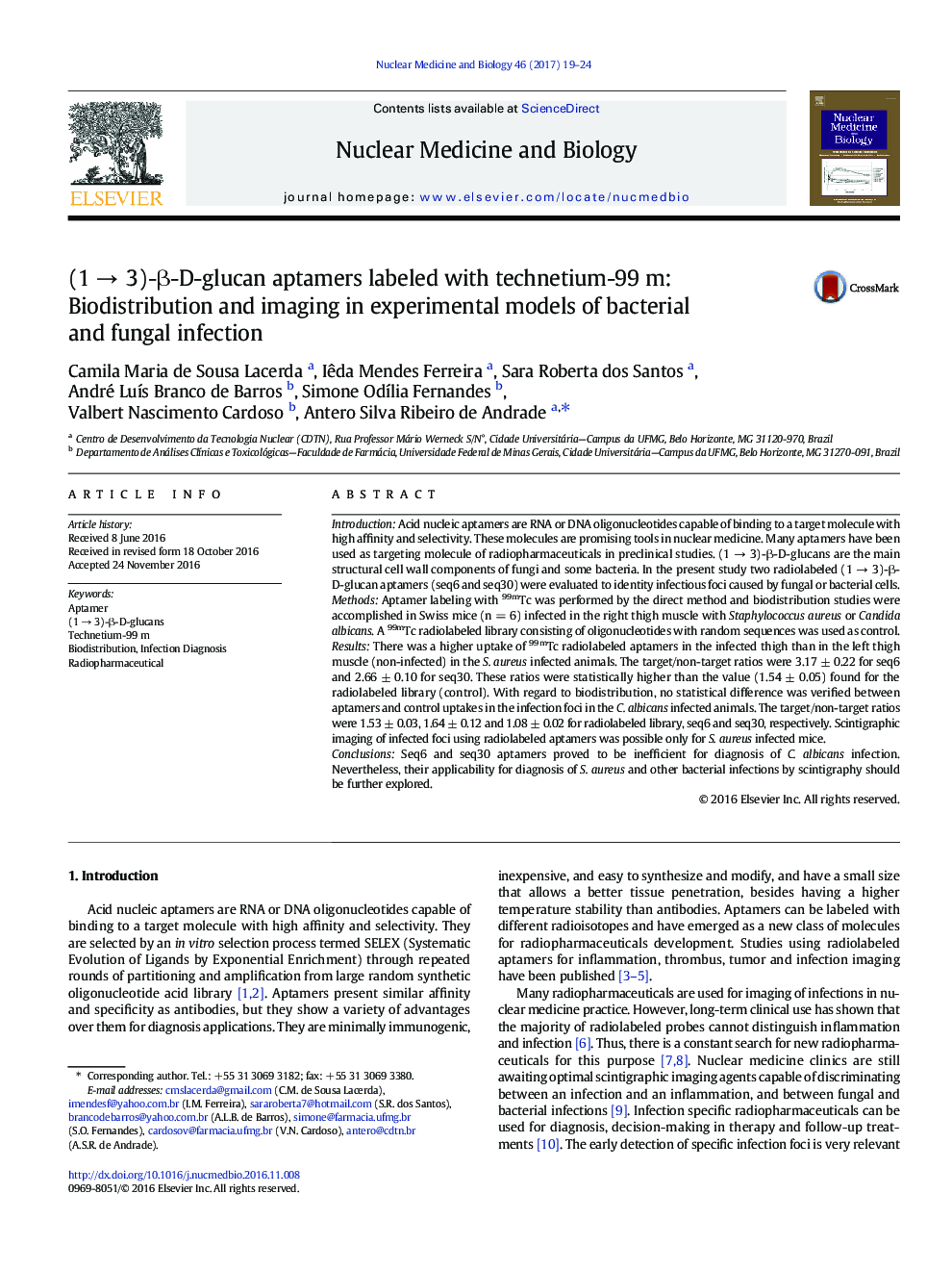| کد مقاله | کد نشریه | سال انتشار | مقاله انگلیسی | نسخه تمام متن |
|---|---|---|---|---|
| 5529010 | 1548831 | 2017 | 6 صفحه PDF | دانلود رایگان |

IntroductionAcid nucleic aptamers are RNA or DNA oligonucleotides capable of binding to a target molecule with high affinity and selectivity. These molecules are promising tools in nuclear medicine. Many aptamers have been used as targeting molecule of radiopharmaceuticals in preclinical studies. (1 â 3)-β-D-glucans are the main structural cell wall components of fungi and some bacteria. In the present study two radiolabeled (1 â 3)-β-D-glucan aptamers (seq6 and seq30) were evaluated to identity infectious foci caused by fungal or bacterial cells.MethodsAptamer labeling with 99mTc was performed by the direct method and biodistribution studies were accomplished in Swiss mice (n = 6) infected in the right thigh muscle with Staphylococcus aureus or Candida albicans. A 99mTc radiolabeled library consisting of oligonucleotides with random sequences was used as control.ResultsThere was a higher uptake of 99mTc radiolabeled aptamers in the infected thigh than in the left thigh muscle (non-infected) in the S. aureus infected animals. The target/non-target ratios were 3.17 ± 0.22 for seq6 and 2.66 ± 0.10 for seq30. These ratios were statistically higher than the value (1.54 ± 0.05) found for the radiolabeled library (control). With regard to biodistribution, no statistical difference was verified between aptamers and control uptakes in the infection foci in the C. albicans infected animals. The target/non-target ratios were 1.53 ± 0.03, 1.64 ± 0.12 and 1.08 ± 0.02 for radiolabeled library, seq6 and seq30, respectively. Scintigraphic imaging of infected foci using radiolabeled aptamers was possible only for S. aureus infected mice.ConclusionsSeq6 and seq30 aptamers proved to be inefficient for diagnosis of C. albicans infection. Nevertheless, their applicability for diagnosis of S. aureus and other bacterial infections by scintigraphy should be further explored.
Journal: Nuclear Medicine and Biology - Volume 46, March 2017, Pages 19-24